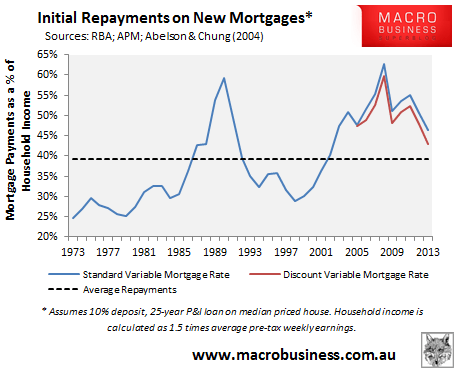
The Adelaide Bank/Real Estate Institute of Australia (REIA) has today released its quarterly affordability report, which revealed an ongoing improvement in home buyer affordability over the March quarter of 2013, although the number of first home buyers (FHBs) has dropped markedly. Rental affordability also worsened over the quarter.
According to the Media Release:
The first quarter of 2013 saw a slight improvement in housing affordability with the proportion of income required to meet loan repayments decreasing 0.5 percentage points to 29.9% according to the Adelaide Bank/Real Estate Institute of Australia (REIA) Housing Affordability Report.
REIA President, Mr Peter Bushby says, “Housing affordability has been slowly improving for seven consecutive quarters, with the proportion of income required at its lowest since the December quarter 2009.”
“However, the number of new finance commitments to first home buyers dropped 22.5% in the March quarter, a drop of 21.3% compared to the same time last year and first home buyers made up just 14.5% of the owner-occupier market, which is the lowest number since the June quarter 2004.”
Below are some key charts from the report, showing housing affordability over time.
First, the proportion of median family incomes required to meet mortgage repayments has improved to 29.9% nationally from 30.4% in December 2012, with Sydney the most expensive capital and the ACT the most affordable (see below graphic).
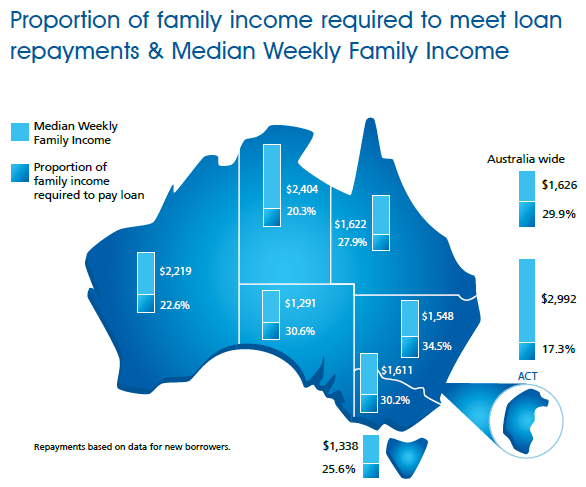
Affordability nationally is tracking near decade lows, but still poor relative to the 1990s (see next chart).
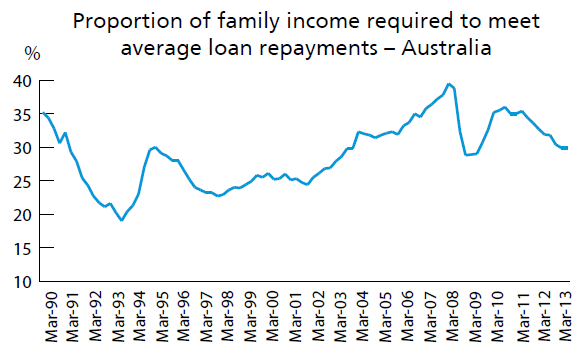
Rental affordability worsened over the quarter, however, with the proportion of median family incomes required to meet rental repayments rising to 24.4% nationally from 23.9% in December 2012, and remains well above pre-2005 levels (see next chart).
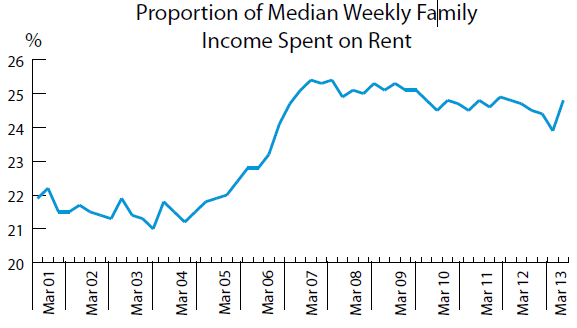
The situation facing FHBs remains difficult however, with the report noting that:
First home buyers made up 14.5% of the owner-occupier market compared to 16.5% in the December quarter 2012. This is the lowest level since the June quarter 2004…
The average loan size to first home buyers increased 1.0% over the quarter and 4.1% compared to the March quarter of the previous year…
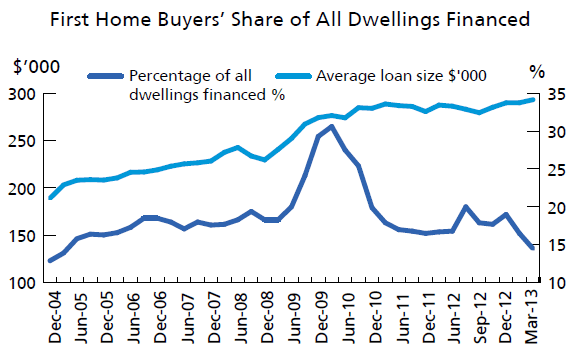
The Adelaide Bank/REIA’s affordability report follows the release last week of the HIA housing affordability index, which also showed affordability near decade highs (see next chart).
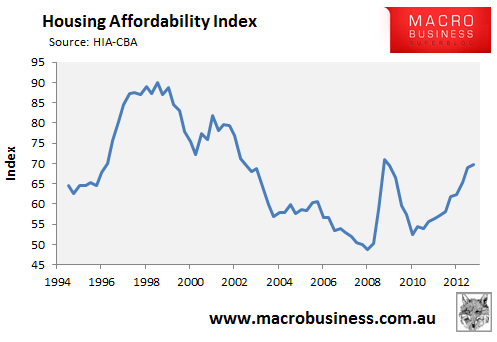
As noted then, I have always had concerns with these types of measures. How they can claim that housing affordability is currently above (HIA) or near (REIA) mid-1990 levels is beyond me, given that the median capital city house price in 1994 was only around $150,000 (compared with around $550,000 currently) and variable mortgage rates were just under 9.5% (versus 5.4% currently).
More broadly, housing affordability (i.e. the cost of the home relative to incomes) and mortgage serviceability (the immediate cost of servicing the loan) are not the same thing. The former has only improved modestly, whereas the latter has improved significantly thanks to the reduction in interest rates.
My own mortgage affordability index is below, with median house prices derived from Abelson & Chung (2004) and APM, variable mortgage rates from the RBA, and household income measured as 1.5 times average pre-tax weekly earnings. As you can see, mortgage affordability has certainly improved, although it remains well below the long-term average (see next chart).
